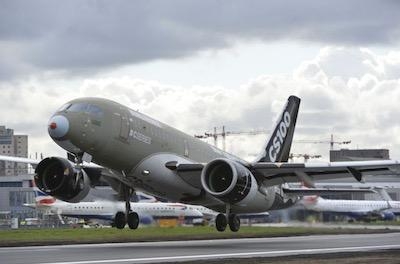Tue, Jan 03, 2023
AD 2022-26-06 Prompted By Reports Of Flight Control (Horizontal Stab, Rudder, And Elevator) Decals Degrading And Peeling
The FAA is adopting a new airworthiness directive (AD) for certain Airbus Canada Limited Partnership Model BD-500-1A10 and BD-500-1A11 airplanes.

This AD was prompted by reports of flight control (horizontal stabilizer, rudder, and elevator) decals degrading and peeling (damage), reports of operators painting over these decals, and reports that procedures to replace these decals were inaccurate, potentially causing incorrect positioning of replacement decals. This AD requires inspecting the left and right horizontal stabilizer decals for visibility and damage; and for certain airplanes, inspecting the rudder and left and right elevator decals for visibility and damage; and doing applicable corrective actions; as specified in a Transport Canada AD, which is incorporated by reference. The FAA is issuing this AD to address the unsafe condition on these products. This AD is effective February 2, 2023.
Supplementary Information: The FAA issued a notice of proposed rulemaking (NPRM) to amend 14 CFR part 39 by adding an AD that would apply to certain Airbus Canada Limited Partnership Model BD-500-1A10 and BD-500-1A11 airplanes. The NPRM published in the Federal Register on July 29, 2022 (87 FR 45709). The NPRM was prompted by AD CF-2022-01, dated January 7, 2022, issued by Transport Canada, which is the aviation authority for Canada (referred to after this as the MCAI).

The MCAI states that flight control decals have been degrading and peeling, operators have been painting over these decals, and procedures to replace these decals were inaccurate, potentially causing incorrect positioning of replacement decals. An investigation determined that the degradation and peeling of the flight control decals were caused by an incorrect clear protective coating being applied during production, and that flight control decals were being painted over because of unclear in-service procedures. The in-service procedures were revised to clearly state that the flight control decals are to be masked prior to painting, and to ensure the flight control decals are properly placed. Flight control decals that are damaged or incorrectly positioned could introduce rigging offset of flight control surfaces, which, when combined with other failures or severe maneuvers, could result in loss of flight control surface effectiveness or structural loading that exceeds the airframe's capability. See
the MCAI for additional background information.
In the NPRM, the FAA proposed to require inspecting the left and right horizontal stabilizer decals for visibility and damage; inspecting the rudder and left and right elevator decals for visibility and damage for certain airplanes; and doing applicable corrective actions.
You may examine the MCAI in the AD docket at regulations.gov under Docket No. FAA-2022-0981.
More News
Aero Linx: Model Aeronautical Association of Australia MAAA clubs are about fun flying, camaraderie and community. For over 75 years, the MAAA has been Australia’s largest fl>[...]
Touchdown Zone Lighting Two rows of transverse light bars located symmetrically about the runway centerline normally at 100 foot intervals. The basic system extends 3,000 feet alon>[...]
“Discovery and innovation are central to our mission at Virgin Galactic. We’re excited to build on our successful record of facilitating scientific experiments in subor>[...]
How To Get A Story On Aero-TV News/Feature Programming How do I submit a story idea or lead to Aero-TV? If you would like to submit a story idea or lead, please contact Jim Campbel>[...]
Student Pilot Reported That During Rotation, “All Of A Sudden The Back Of The Plane Kicked To The Right..." Analysis: The student pilot reported that during rotation, “>[...]
 ANN's Daily Aero-Linx (05.02.24)
ANN's Daily Aero-Linx (05.02.24) ANN's Daily Aero-Term (05.02.24): Touchdown Zone Lighting
ANN's Daily Aero-Term (05.02.24): Touchdown Zone Lighting Aero-News: Quote of the Day (05.02.24)
Aero-News: Quote of the Day (05.02.24) ANN FAQ: Contributing To Aero-TV
ANN FAQ: Contributing To Aero-TV NTSB Final Report: Cirrus Design Corp SR20
NTSB Final Report: Cirrus Design Corp SR20




